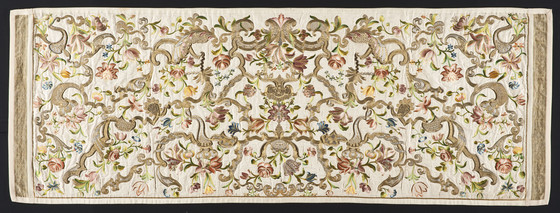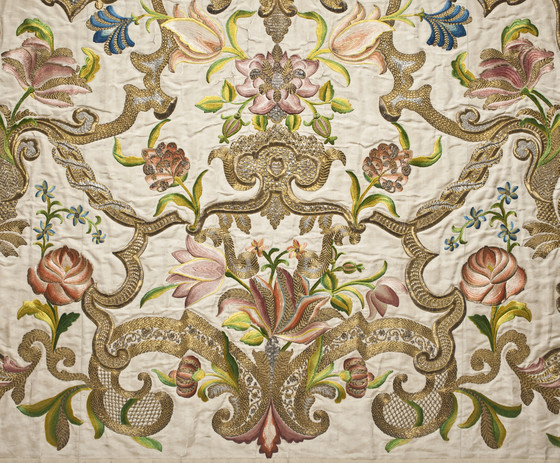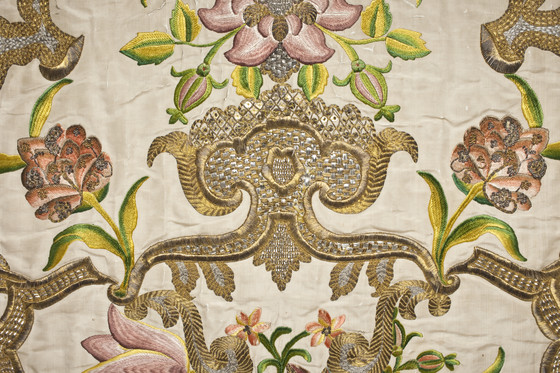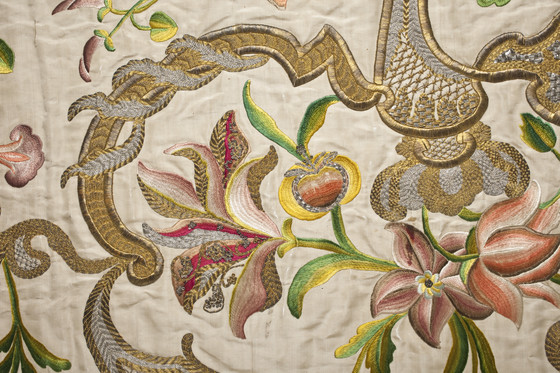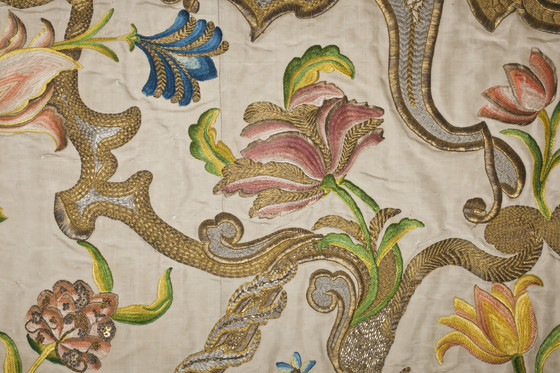The art of embroidery in Europe is considered to have reached its highest level of sophistication and technical virtuosity during the eighteenth century; this altar frontal is an example of the remark...
The art of embroidery in Europe is considered to have reached its highest level of sophistication and technical virtuosity during the eighteenth century; this altar frontal is an example of the remarkable skill of designers and needleworkers who created exquisite vestments and furnishings for the church—ecclesiastical furnishings that reflected, in complex patterns and costly materials, trends in the decorative arts and fashionable dress of the period.
The Catholic Church responded to the austerities of the Reformation with opulence and grandeur in church architecture, processions, and especially in textiles. Silks from France and Italy were embellished with intensely colored floral patterns and encrusted with highlights of gold and silver. With the knowledge and techniques developed over centuries of experience of "painting with the needle" from cartoons designed by painters for ecclesiastical patrons, a new professional class of designers and embroiderers concentrated less on religious figural narratives and created instead elaborate compositions of naturalistic flowers, graceful arabesques, and serpentine meanders typical of rococo ornament. "Exotic" motifs from Asia, introduced a century before in the products brought to Europe by commercial trading companies, filled the pattern designs of chinoiserie that so heavily influenced the decorative arts; the color, wealth of gold and silver thread, and motifs of the altar frontal reflect these various influences.
Incredibly worked floral forms demonstrate the texture and ingenuity of the altar frontal's needlework. From the beginning of the eighteenth century, new advances in the chemistry of dyeing produced vibrant colors that excited the imagination of weavers and embroiderers. Brilliant shades of orange, pink, and yellow, aquamarine and Prussian blue, even a wide range of browns—colors with names such as "hellish blue" or "tobacco"—expanded the color palette for the delicate, naturalistic flowers that so richly ornament this antependium.
More...
